
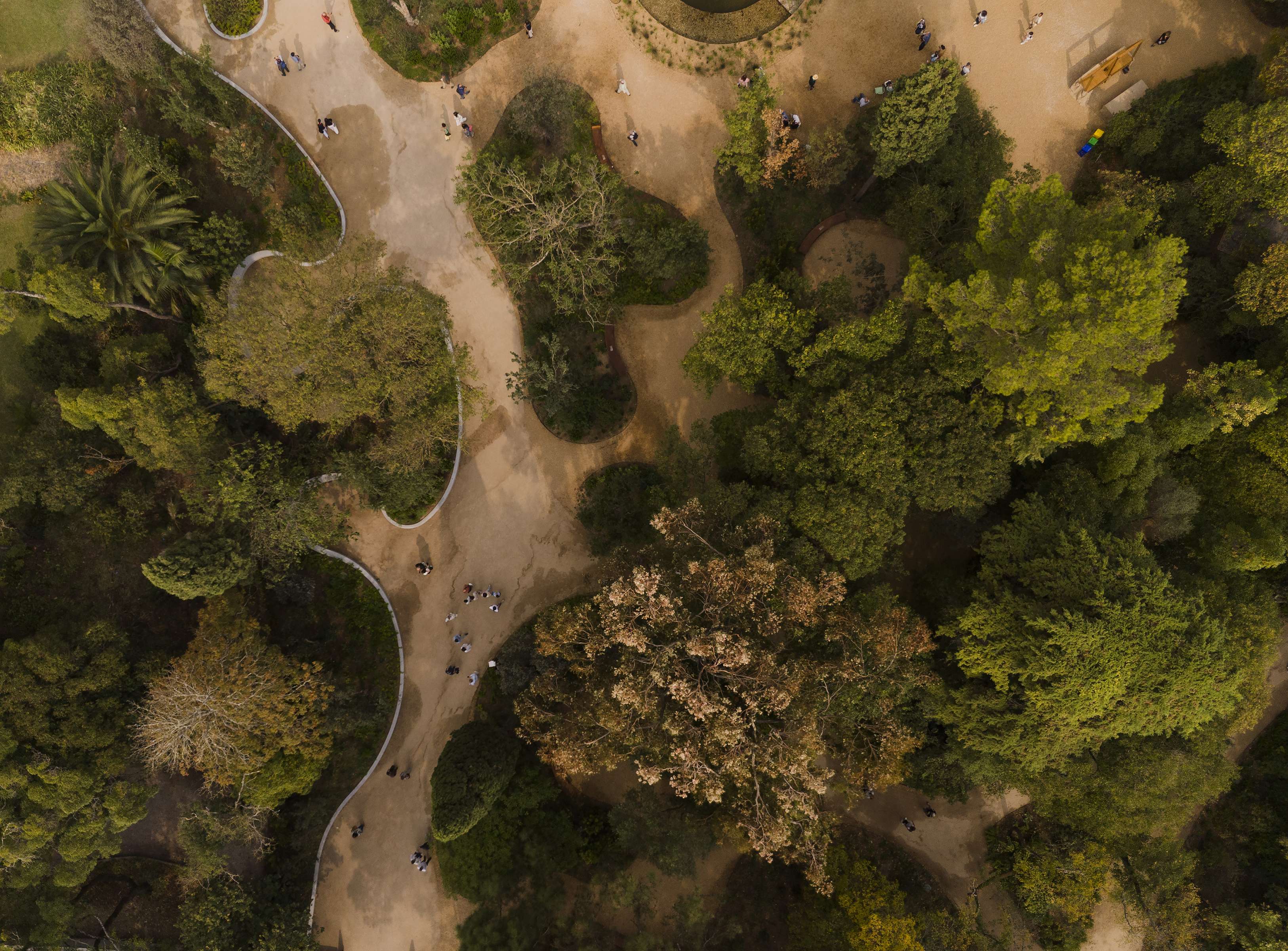
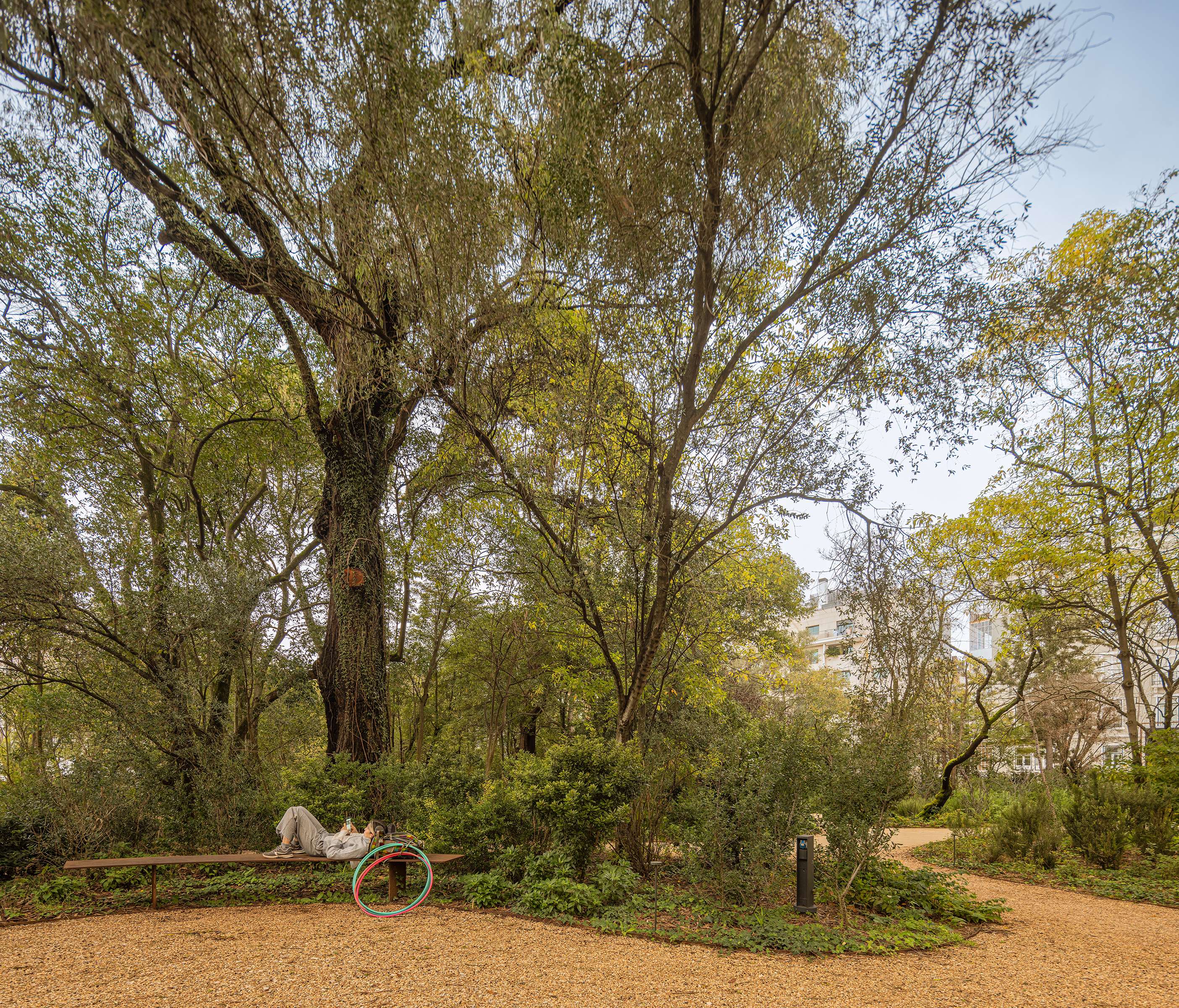
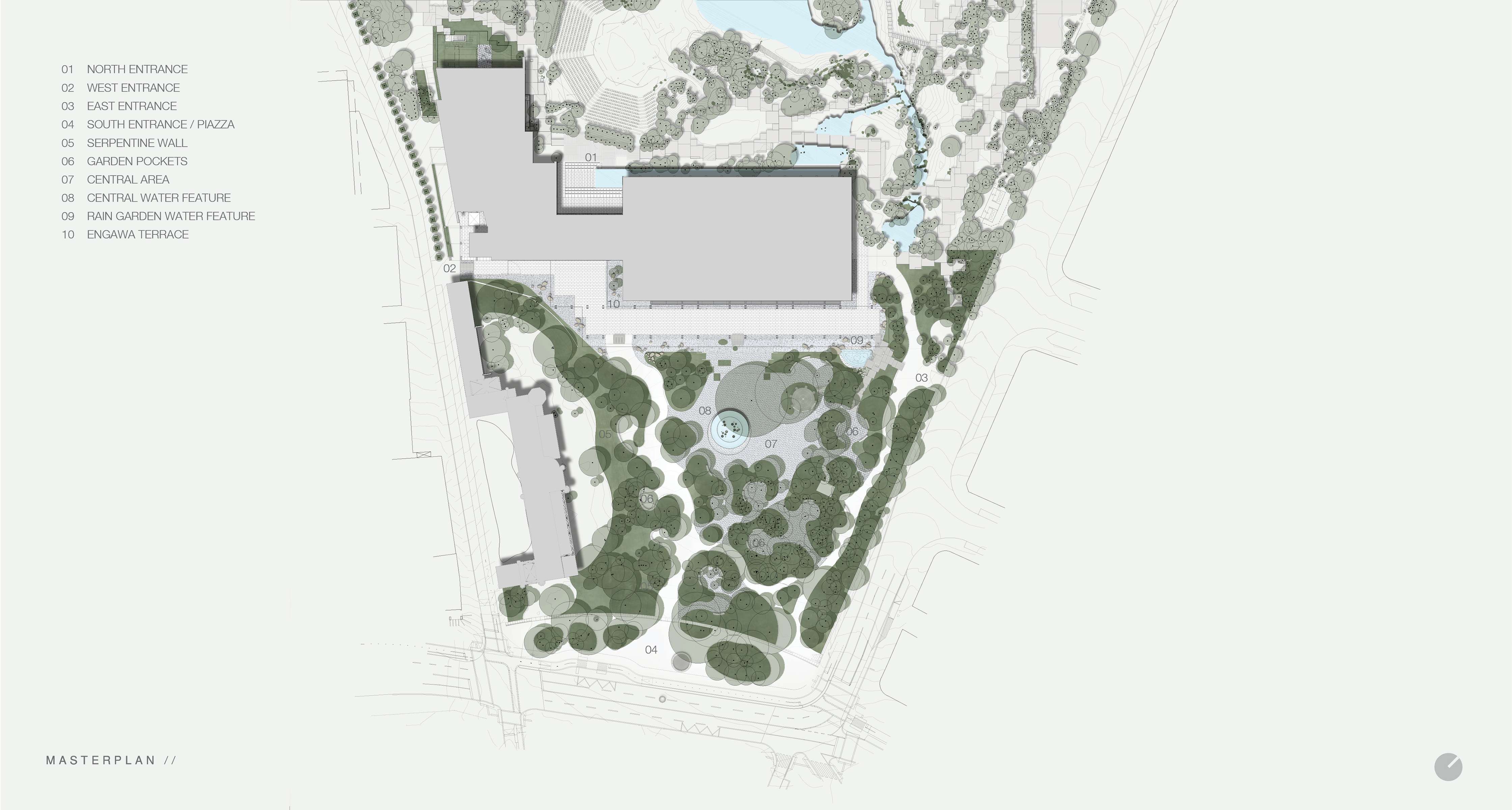
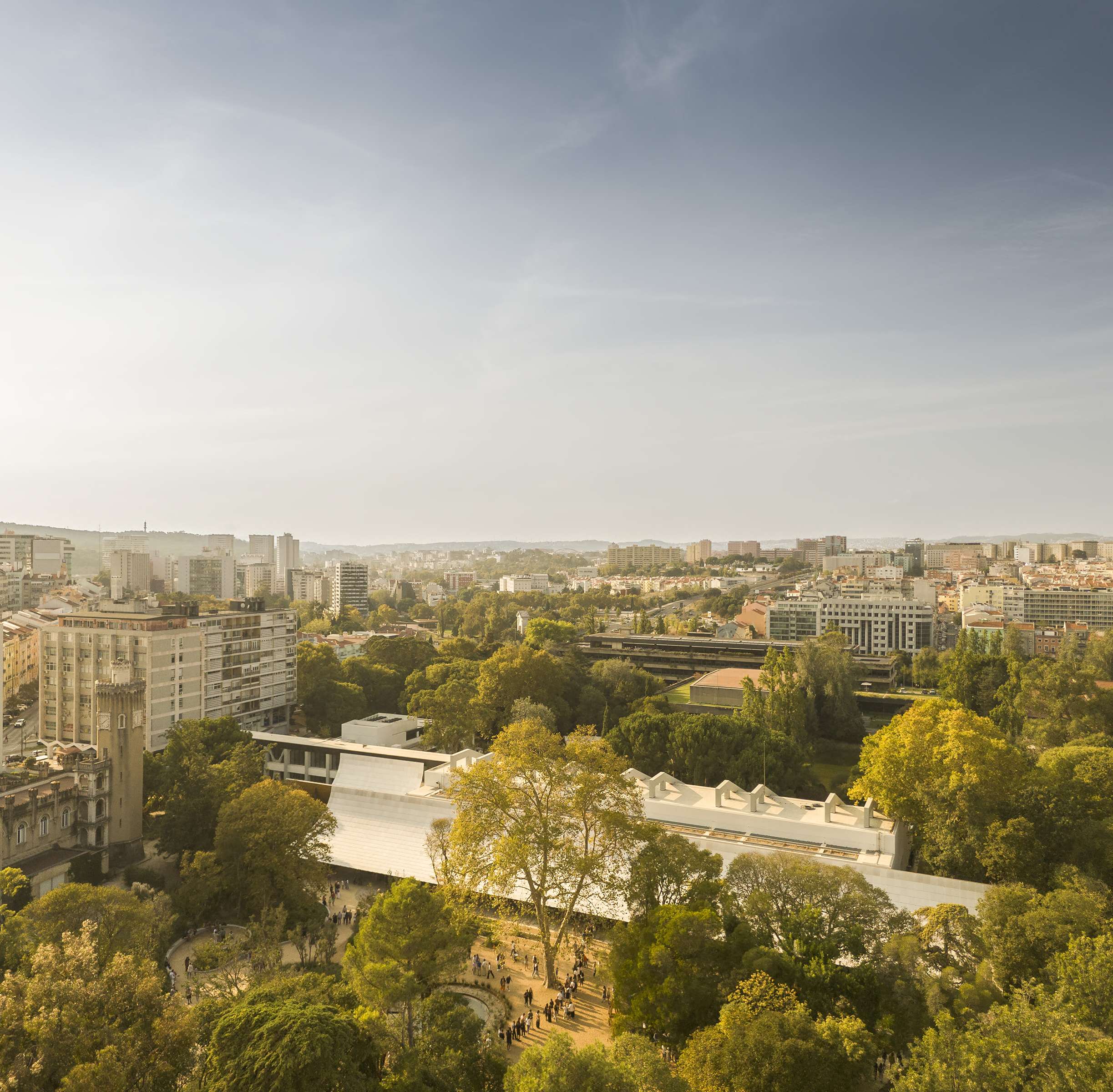
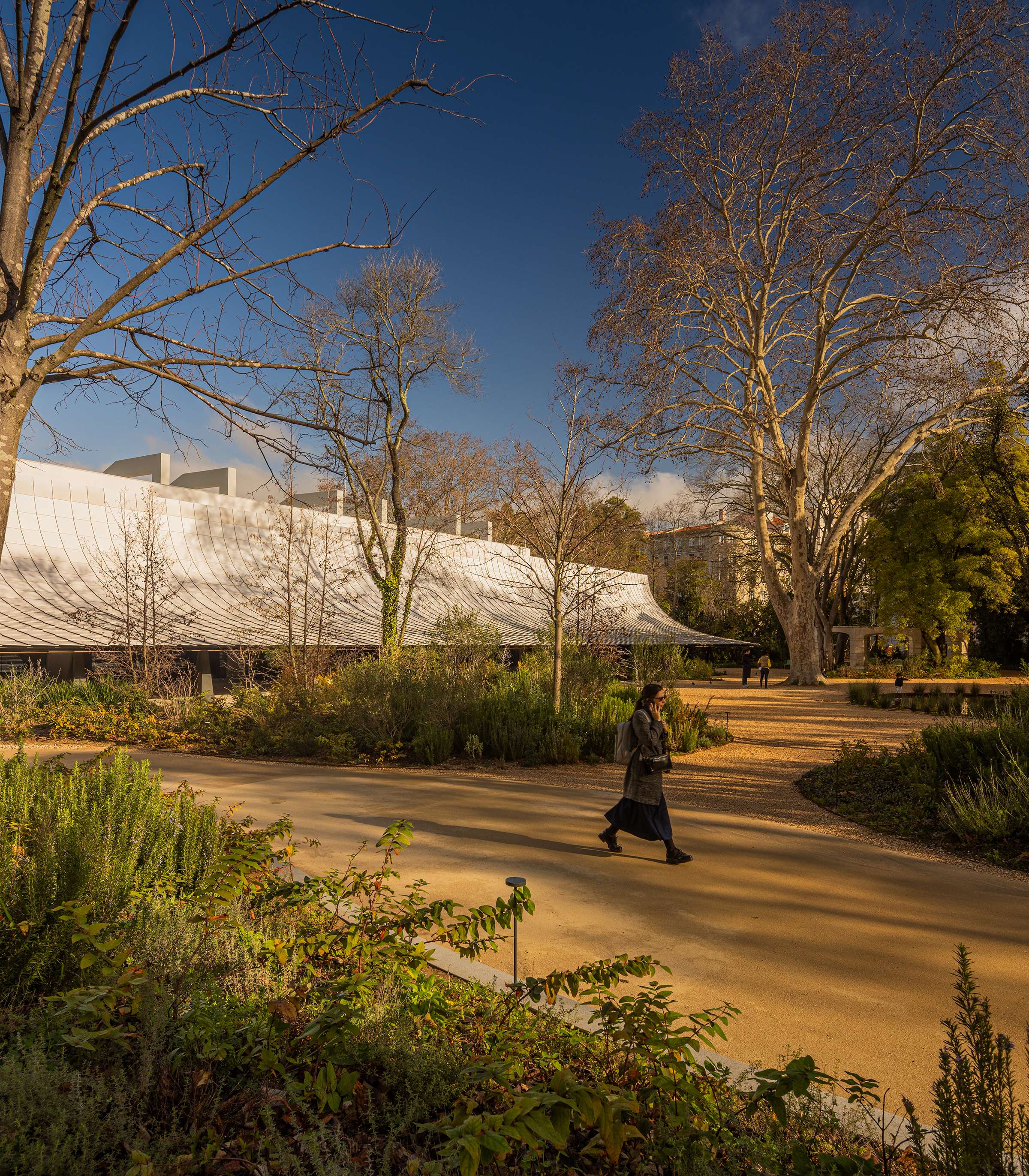
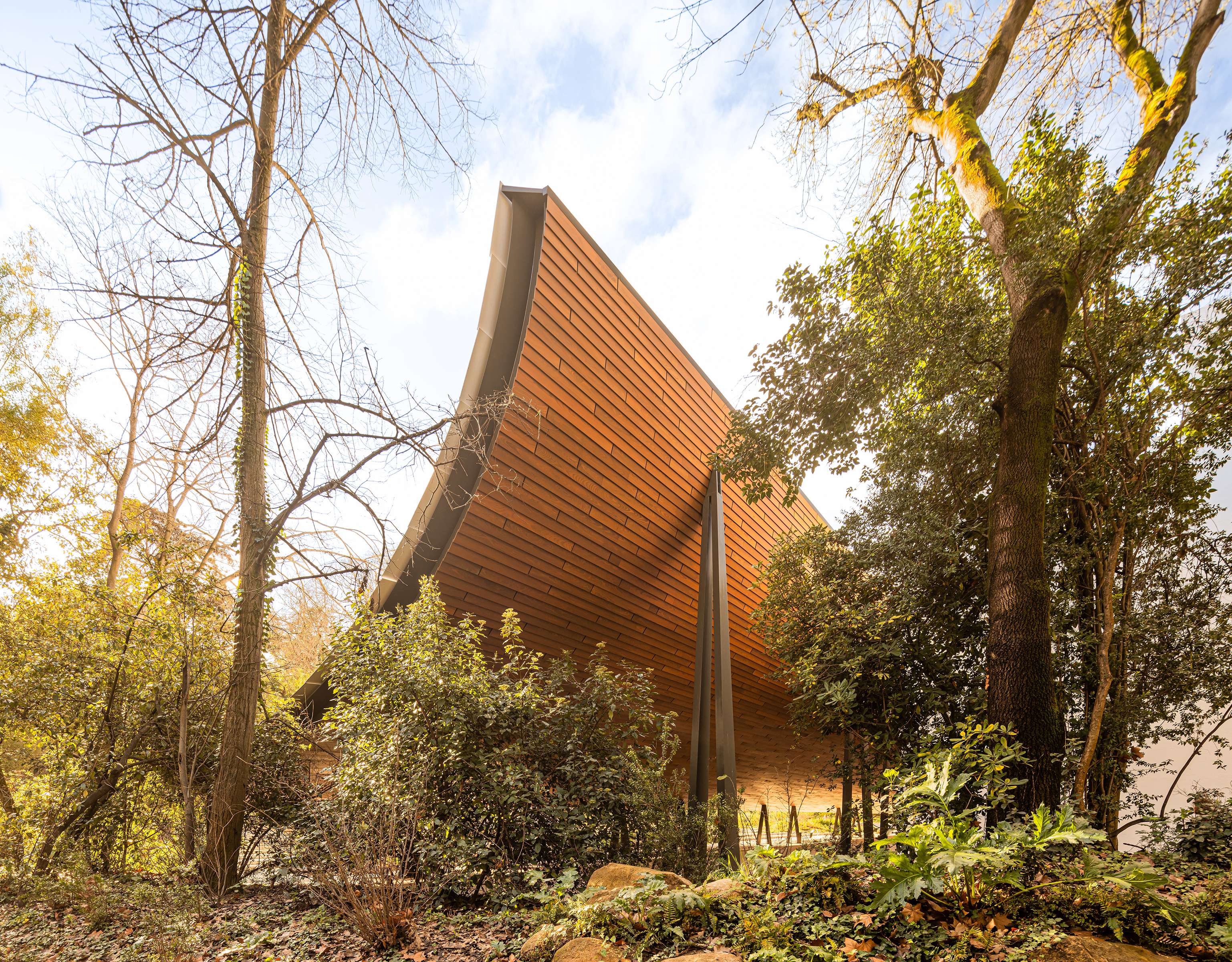




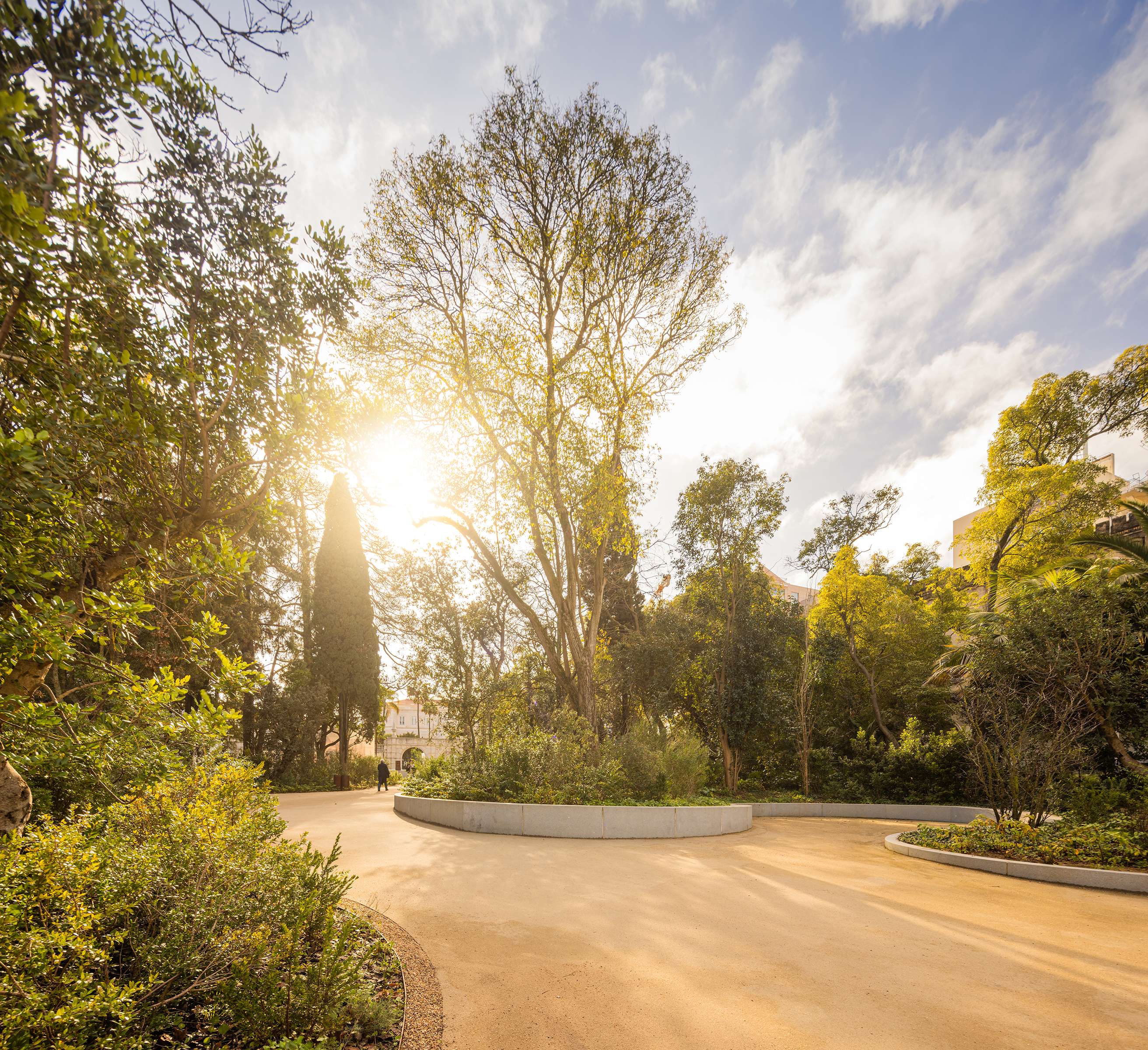
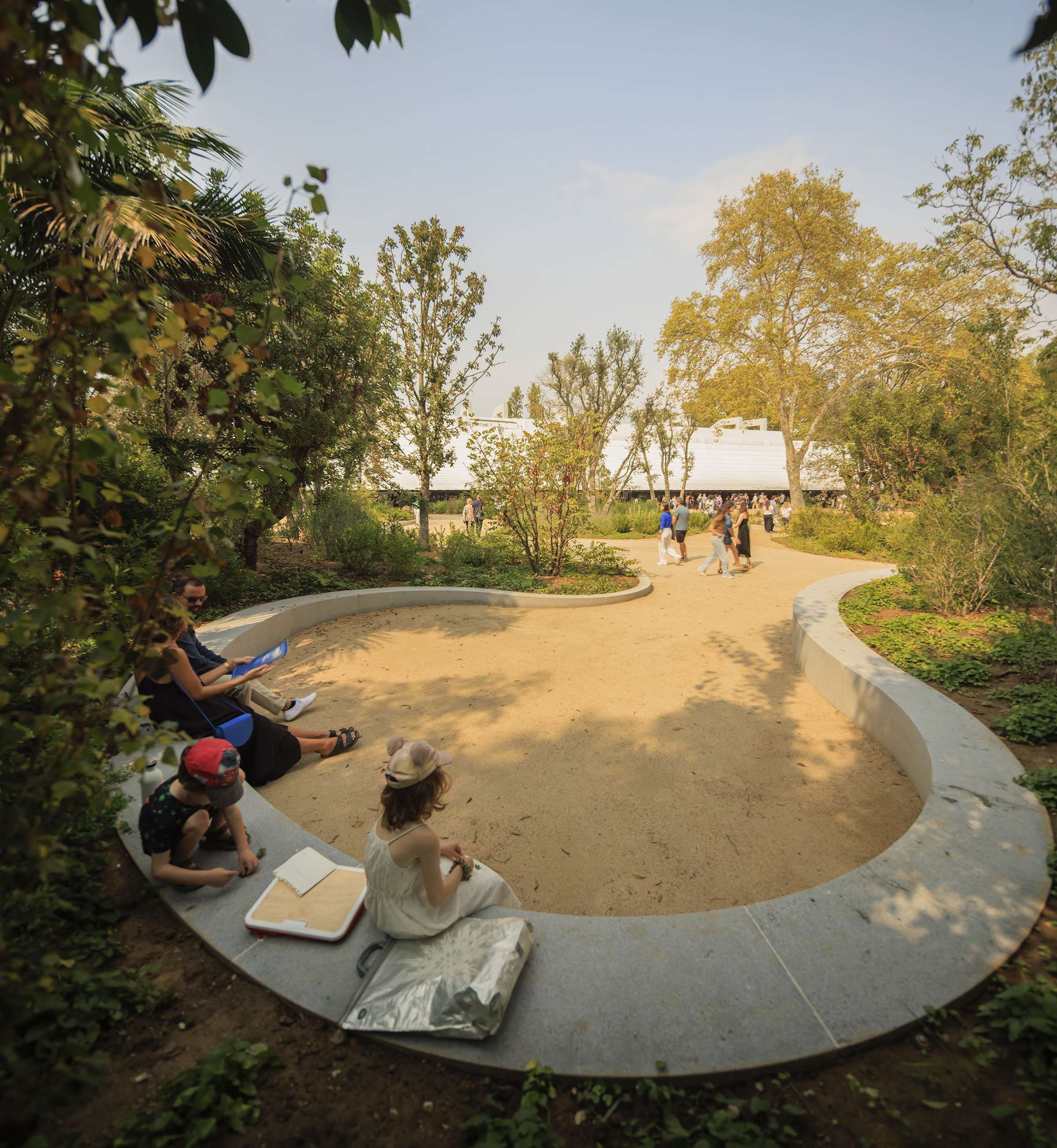
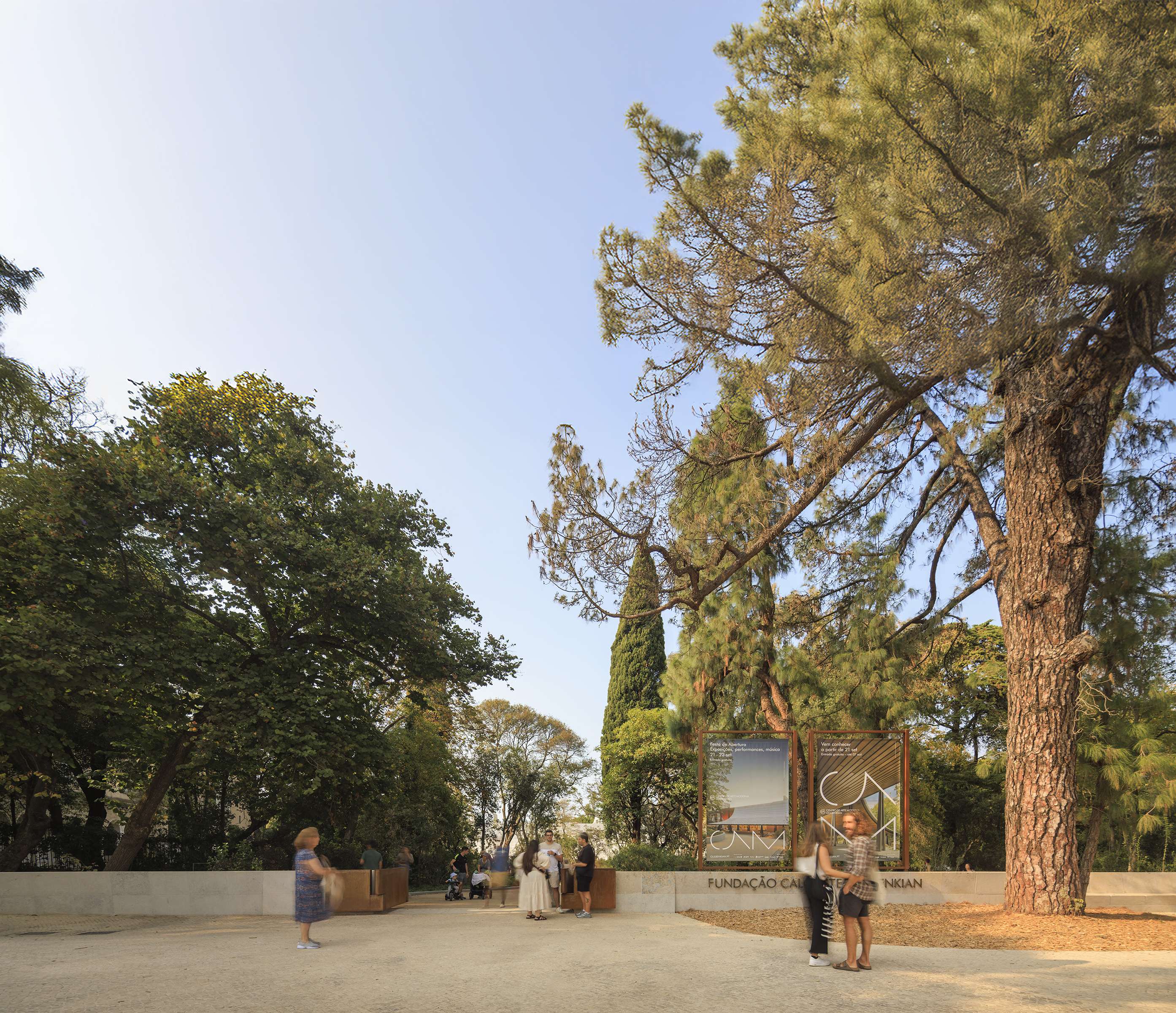
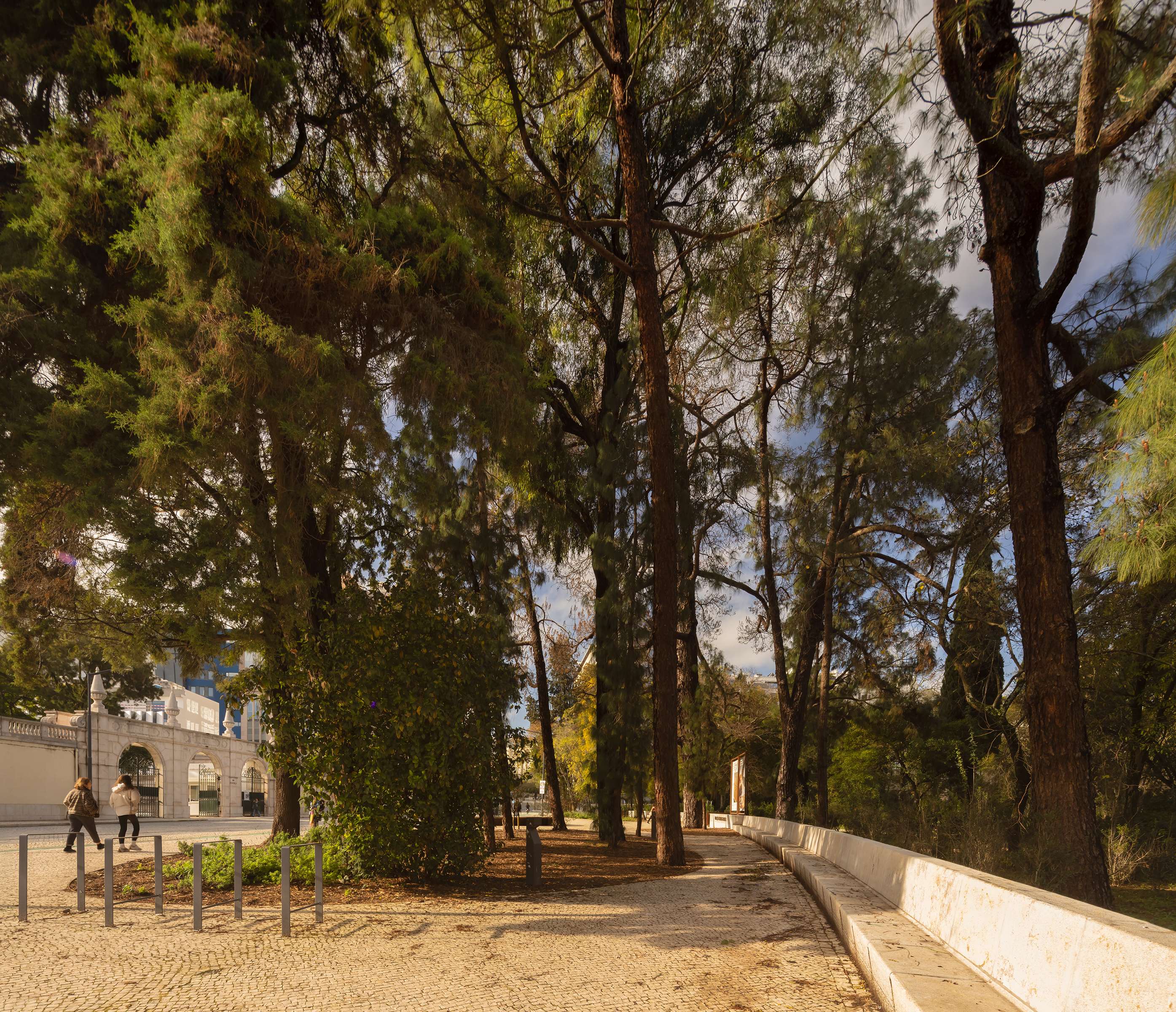
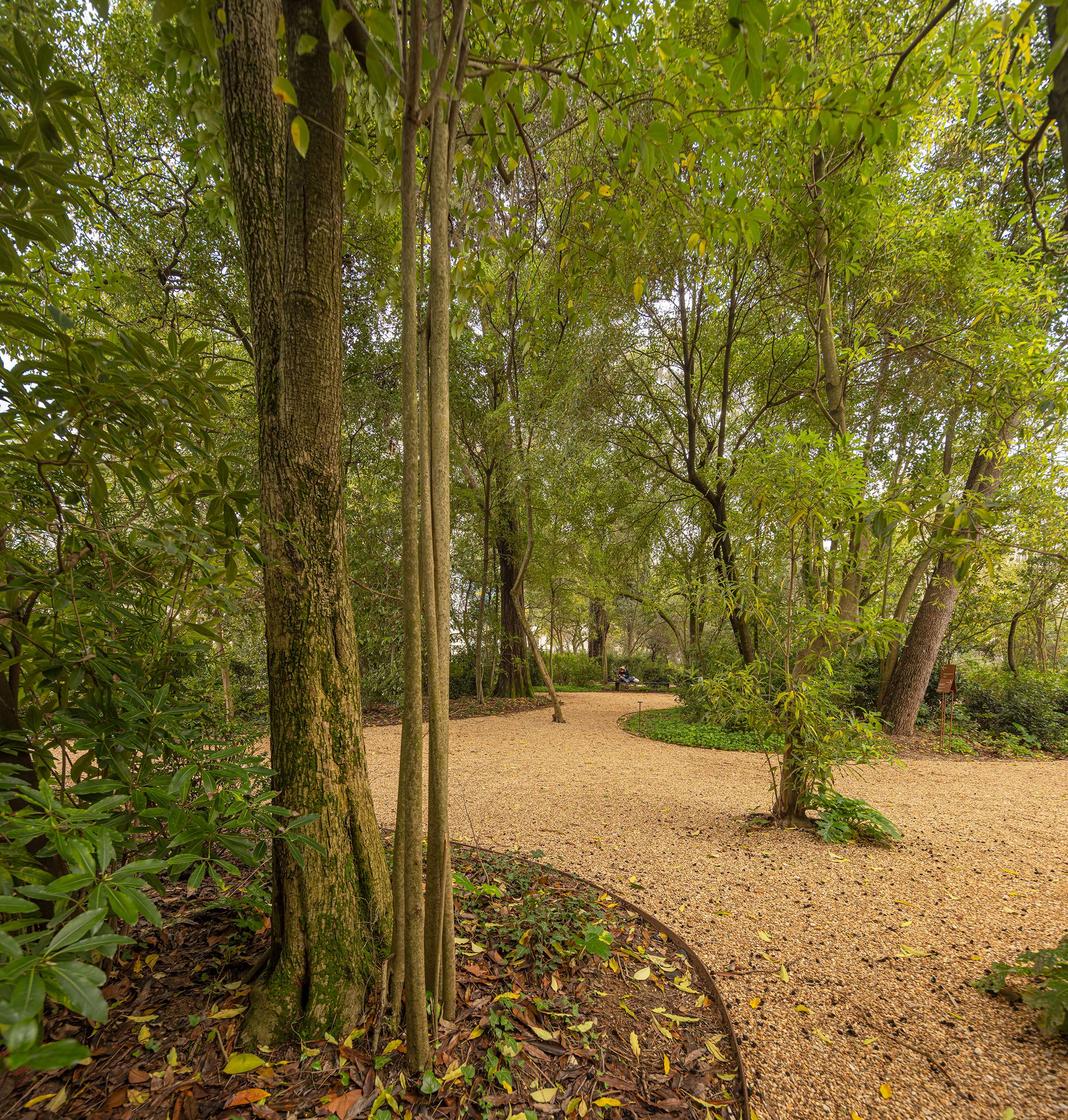
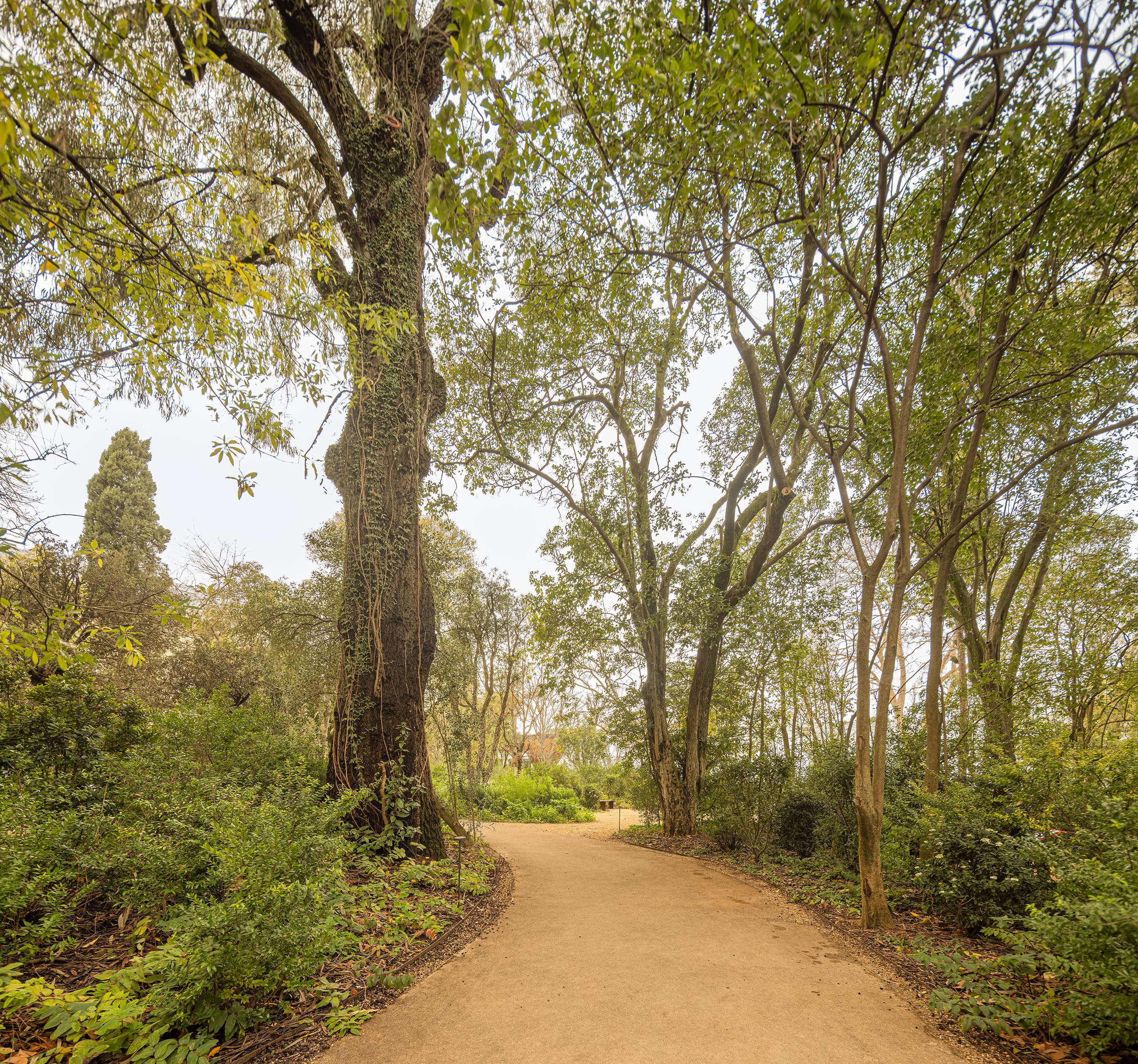
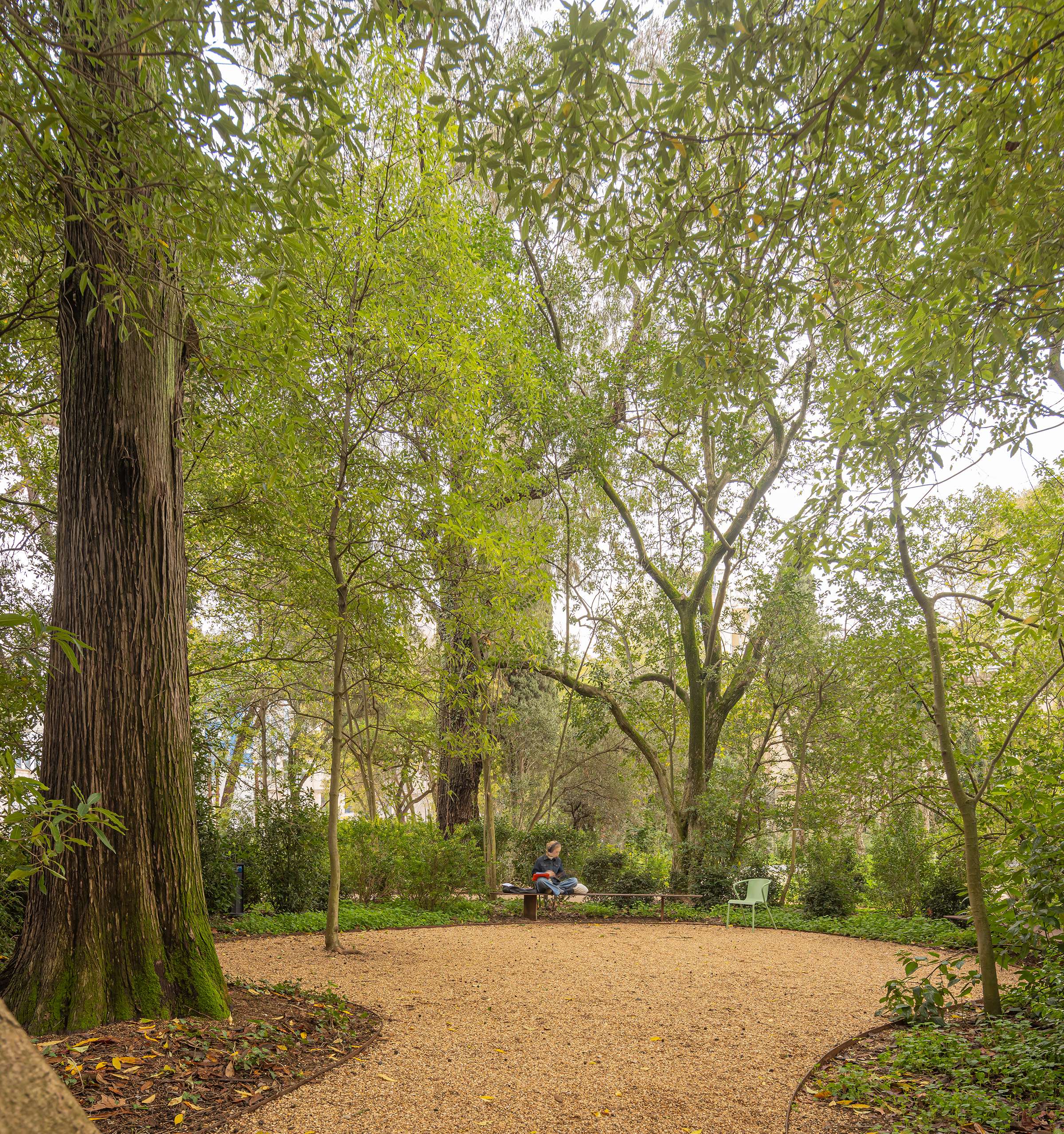
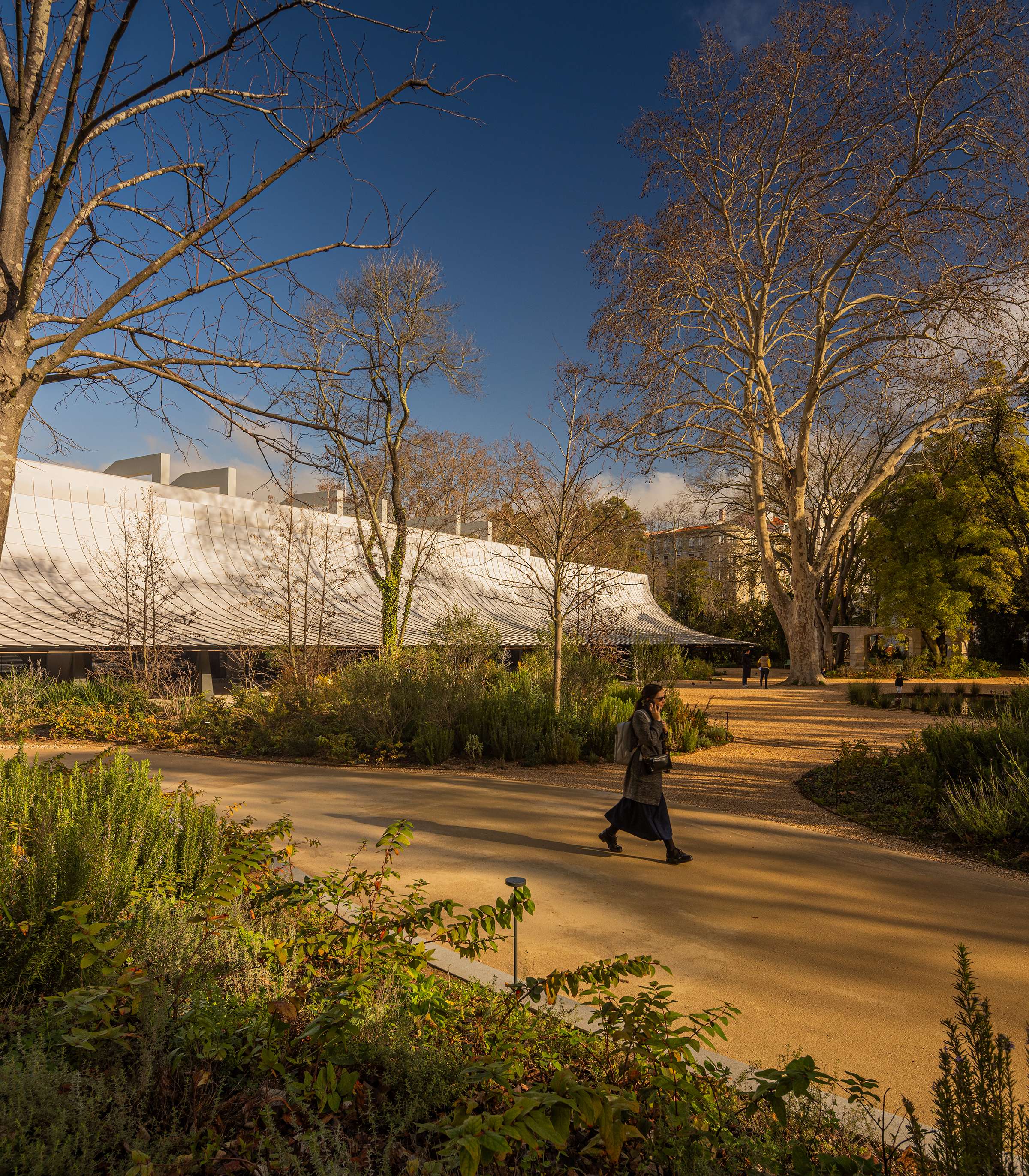
Gulbenkian Foundation Garden Extension
Gulbenkian Foundation Garden Extension
Gulbenkian Foundation Garden Extension
The original Gulbenkian garden was designed in the 1960’s by Goncalo Ribeiro Telles and Antonio Viana Barreto. It represents the best example of modern Portuguese landscape architecture and has a deep emotional connection with the people of Lisbon. Our intention was to create a seamless and respectful extension to the original garden. Instead of giving the new grounds a distinct touch, we opted to continue the essence and spirit of what the old masters have done, favoring continuity while putting nature at the forefront of the intervention.
The garden was conceived as an urban forest where people could immerse themselves in nature. It was designed as a natural system meant to develop its different ecologies with a high level of autonomy. More than a ‘designed’ landscape, we intended to set in motion different natural processes that will eventually result in complex and distinct habitats providing a myriad of conditions for urban wildlife and a platform where people could come in contact and appreciate the richness of native environments.
Exclusively autochthonous plants were incorporated, collected from several field trips, and propagated over a few years, to establish an indigenous habitat. The garden, with its soft meandering pathways, full of layers and spatial richness, has been thought out as a total sensorial experience. Scents, textures and sounds were carefully orchestrated in order to achieve a holistic immersion. Seasonal changes were a fundamental consideration in the design of this landscape, as a means of revealing natural processes. These changes endow the garden with the ability to alter its relation with the building, the museum, and its urban context. Trees and plants have been precisely located, considering their changes throughout the year and their impact in the way the public will experience the site and its surroundings.
Both the old and new Gulbenkian gardens are intimately connected to the architecture. They are parts of a whole that can’t be disassociated, making it hard to define boundaries and understand what came first. The project also allowed us to reposition the Foundation vis-a-vis its urban context, radically transforming the way the institution relates to the city. The existing high boundary walls that used to conceal the garden were demolished and set back, creating a new plaza along Rua Marques de Fronteira, facing the Vilalba palace. The old trees that once were in the South end of the garden are now part of this new public space. At the center of this space, a novel access to the Gulbenkian Foundation Campus is defined by sculptural corten steel gates and framed by long stone benches. These benches have been built with repurposed limestone blocks from the old existing boundary wall. Besides this main access to the South, the garden presents three other gates that connect it to the city, making it a highly permeable natural environment, seamlessly integrated within the surrounding urban fabric.
Our hope was to start a process that aims to transform a typical ornamental garden into an autochthonous natural environment. A move towards valorizing indigenous plants and their habitats, low water consumption, low maintenance, a move towards zero-chemicals in nature, and ultimately towards self-sustaining landscapes. The objective is to create, with time, a place for people and for wildlife, a space for harmonious cohabitation in the heart of the city.
1-0005 Aerial View of the Garden and the CAM Museum
The garden has been conceived as a seamless extension of the existing park, defining the new South access to the Gulbenkian Foundation campus
2-0014 View of the Main Access Path
The design of the garden responds to the monumental scale of the architecture, modulating and softening its volumes through a careful composition of planting masses and voids.
The design of the garden responds to the architecture, modulating and softening its volumes through a careful composition of planting masses and voids
3-0003 View of Engawa from the East
Landscape and architecture are seamlessly integrated into a harmonious whole. Responding to the many different conditions, the project engages the built elements in different ways, at times concealing and at other times revealing unexpected views.
Landscape and architecture are seamlessly integrated into a harmonious whole, engaging the built elements, concealing and revealing unexpected views
4-0019 Social Area from the East and Central Pond
The museum’s South façade is defined by the Engawa, a monumental canopy that opens up to the garden through a large gathering space around a circular pond. This space has been conceived as the garden’s social area and also as a multipurpose zone able to host different museum related events and activities.
The South façade, defined by the Engawa, a monumental canopy, opens up the garden’s social area through a large gathering space around a circular pond
5-0115 West Access to the Gardens Social Area
The gardens new vegetation consists of exclusively native species, showcasing a rich variety as a response to different conditions and orientations
6-0241 Social Area from the South
Large existing trees, like a monumental Platanus hispanica and a group of Celtis australis, serve as counterpoint to the horizontality of the museum’s Engawa. The circular pond at its center defines and vertebrates this area. Loose garden chairs allow the visitor to appropriate and redefine the space in response to group dynamics, museum events or climatic conditions.
Large existing trees and a circular pond serve as counterpoint to the horizontality of the museum’s Engawa
7-0183-1 Aerial View of the Main Path and Serpentine Wall
The main path connects the new South Access to the museum. It is defined at its West boundary by a sculptural meandering wall made of solid granite blocks.
The main path, connecting the new South access to the museum, is defined at its West by a sculptural meandering wall made of solid granite blocks
8-0107 Main Path and Serpentine Wall
The Serpentine wall has been conceived as a sinuous sculptural gesture that descends from the South entrance towards the museum, wrapping around the existing trees and creating alcoves and seating areas along the main access path.
The serpentine wall is a sinuous sculptural gesture that wraps around the existing trees, creating alcoves and seating areas along the main access
9-0074-1 Serpentine Wall Bench
The Serpentine wall not only defines spaces along the garden’s West boundary. It is also an element that transforms, from a low, narrow border to generous seating element, in response to the different level conditions between the main access path and the existing terrain.
The serpentine wall transforms from a low narrow border to a generous seating element, in response to the different level conditions
10-0032-1 South Entrance
The garden opens up to the city through a new public space, created after demolishing the site’s old boundary walls. The new boundary is defined by a low stone wall that has been significantly set back from the original property limit, defining a new urban praça. Many of the large trees that were once in the old garden are now part of this new public space.
The garden opens up to the city through a new public space, created after dismantling and setting back the site’s old boundary walls
11-0043 View of the South Public Space and the Stone Bench
The new public space to the South is defined by a low stone wall with large benches, made with repurposed stone blocks from the old boundary wall
12-0063 Forest Zone
The central part of the garden is characterized by large existing trees. The paths layout, as well as the location of spaces of different sizes that define this area, have been determined by the location of these existing trees.
The central part of the garden, characterized by large existing trees, have determined the paths layout and the various spaces that define this area
13-0058 Main Path through Forest
Native shrubs contribute to further define the paths that cross the forest zone, controlling views to adjacent areas. The result is a spatially layered landscape that makes it seem larger than it really is.
Native shrubs further define the paths that cross the forest zone, controlling views to adjacent areas and resulting in a spatially layered landscape
14-0065 Forest Room
A series of organic shaped spaces have been carved out from the existing tree grove that occupied the heart of the site. These spaces provide the perfect environment for visitors to immerse themselves in Nature.
A series of organically shaped spaces provide the perfect environment for visitors to immerse themselves in nature
15-0056 Corten Steel Bench
Corten steel benches provide seating throughout the different forest rooms while maintaining a strong material connection to the old Gulbenkian Foundation garden
Corten steel benches provide seating throughout the forest rooms, maintaining a strong material connection to the old Gulbenkian Foundation Garden
